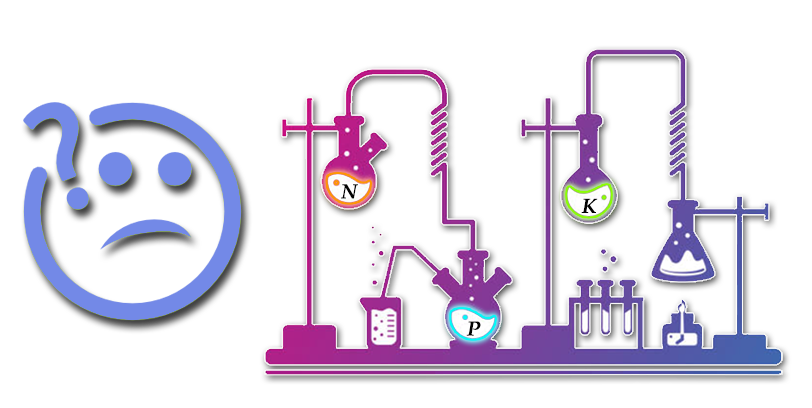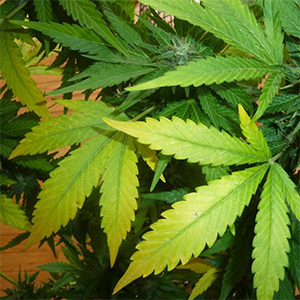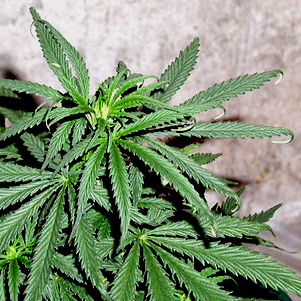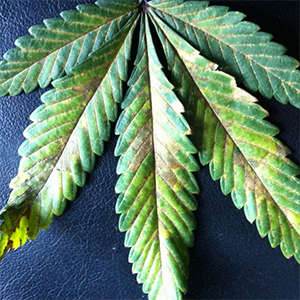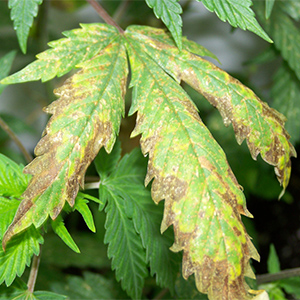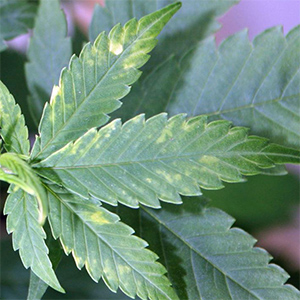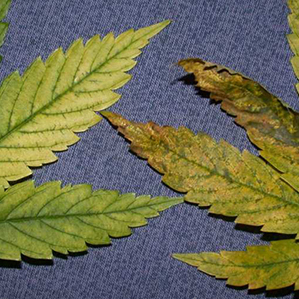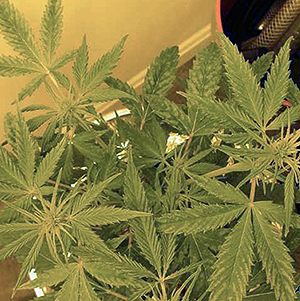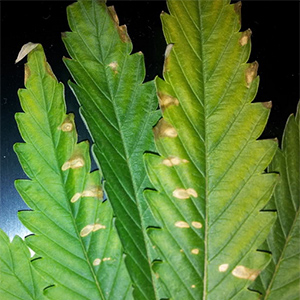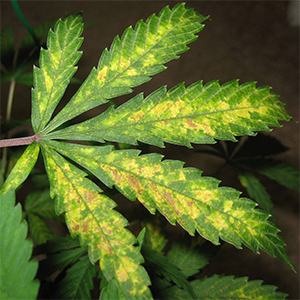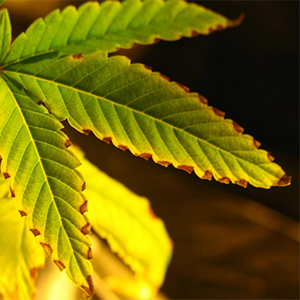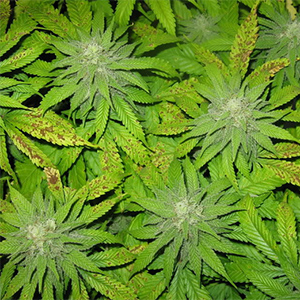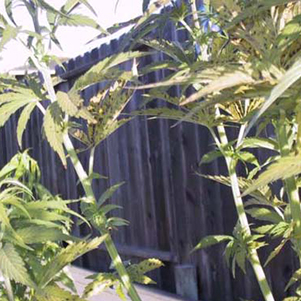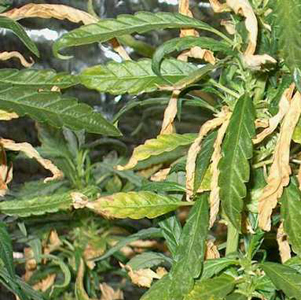
Checkout more grow videos ⇨
Water & Nutrients
Water provides a medium to transport the necessary nutrients for plant life and makes them available for absorption by the roots. Water quality is essential for this process to work efficiently. Microscopic root hairs absorb water and nutrients from the growing medium and then transports them up through the stem to the leaves where they are used for photosynthesis. The flow of water from the soil through the plant is called the transpiration stream. Only a fraction of the water is processed during photosynthesis, the excess water evaporates into the air via tiny pores located on the undersides of the leaves called the stomata in a process called transpiration. The main factors which govern this process are water quality, pH, and nutrient levels.
Nutrients are elements that the plant needs to live. Carbon, hydrogen, and oxygen are absorbed from the air and water. The rest of the elements (nutrients), are absorbed from the growing medium and nutrient solution. Supplemental nutrients supplied in the form of a fertilizer allow cannabis to reach its maximum potential. Nutrients are grouped into three categories: macronutrients, secondary nutrients, and micronutrients. Each nutrient in the above categories can be further classified as either mobile or immobile.
Mobile nutrients include: nitrogen, phosphorus, potassium, magnesium, and zinc, are all able to translocate, or move from one part of the plant to another as needed. For example, nitrogen in the older, lower leaves can translocate to younger leaves to solve a deficiency issue. The result of this translocation will result in deficiency symptoms appearing in the older, lower leaves first.
Immobile nutrients include: calcium, boron, chlorine, cobalt, copper, iron, manganese, molybdenum, silicon, and sulfur, do not translocate to new growth when needed. They remain deposited in their original place in the older leaves. This is the reason deficiency symptoms appear first in the upper, new leaves on top of the plant.


pH - Nutrient Uptake
In order for plants to be able to absorb the nutrients contained within water, the pH will need to be within a certain range, as you can see in the image on the left. If your mediums pH is significantly higher or lower than the target area you may need to adjust its pH by buffering with lime. If its pH is only a little off you can adjust the pH of your solutions and then do some runoff testing. Read more about Nutrient Runoff Testing.
- When growing organically in soil, microorganisms and a high CEC tend to keep the pH in check and requires little to no human intervention. For organic cannabis cultivation the pH target of your water/nutrient solutions should be around 6.4 as long as your medium already has or has been buffered to a pH of 6.4.
- When growing in peat you would also usually target a pH of 6.4 for your growing medium and solutions but this can vary depending on all the ingredients used in the medium.
- When growing in coco, the ideal pH for your growing medium is about 6.0 and is from 5.8 – 6.0 for your nutrient and water solutions.
- When growing hydroponically the acceptable pH range for your nutrient and water solutions is from 5.5 – 6.5, but for cannabis 5.8 – 6.0 is ideal.
When the pH falls out of the range required by cannabis (and most other plants), the elements within the water/nutrient solution become chemically bound and plants are unable to process them, leading to deficiency symptoms, lockout, and disease. When nutrients become bound within the growing medium the resulting toxic salt buildup severely affects the plant’s ability to intake water. Every full point change in pH signifies a ten-fold increase or decrease in acidity or alkalinity. For example a pH of 5 is ten times more acidic than a pH of 6. Water with a pH of 5 is one hundred times more acidic than water with a pH of 7. As you can see, with a ten-fold difference between each point on the pH scale, accurate measurement is pretty important.
The best way to measure the pH of your solutions and growing medium is to buy a pH meter that has a separate BNC attached probe with green glass. These meters are far better than the garbage pH pens from any manufacturer. The most important thing about maintaining pH probes is to always keep them in storage solution when not in use.
Different Plants have Different Nutritional Needs
The most important thing about nutrients, whether you decide to use chemical or organic based fertilizers, is how much to use. Most fertilizers purchased in specialty gardening shops will have recommended dosage instructions which may or may not be right for you. Different varieties of cannabis for instance will have different nutritional requirements with some being able to take higher dosages than others. Using the instructions on the bottle may be too much for your variety. The best practice is to get the nutrient manufacturers feeding schedule to use as a base and see how it goes and then adjust up or down as needed. Most cannabis varieties will respond well to the nutrient dosage table found on the Nutrient Runoff Testing page.
Don’t try to wing it by scheduling feeding by memory, you will fail. Print out a 3-4 month calendar and hang it in the garden. Keep an exact accounting of what was done on each day. Keep track of things like if you used nutrient or plain water, if you applied a mycorrhizae solution, when you transplanted to larger containers, when you adjusted light schedules, and when you notice deficiencies or signs of over fertilization. Keeping a specific accounting day by day will make you more successful in future sessions. Download the Zombie Gardens Monthly Planner.


Misdiagnosed Disorders
Many indoor gardening problems are the result of an imbalanced pH of the growing medium and water/nutrient solutions that results in nutrient lockout. Once a plant shows symptoms, it has already undergone severe nutritional stress. It will take time for the plant to resume vigorous growth. Plants grown indoors are often harvested so quickly that they don’t have time to recover from nutrient imbalances. Correct identification of each symptom as soon as it occurs is essential to help plants retain vigor.
Often nutritional and environmental stress caused by poor cultural practices will also lead to disease and insect problems. The basic elements of the environment must be checked and maintained at specific levels to avoid a cascade of issues. Check each environmental variable: air, light, soil, water, temperature, and humidity, and get the grow room environment dialed in before deciding that plants are simply nutrient deficient.
Nutrient Deficiencies
Diagnosing nutrient deficiencies can be difficult as the symptoms from one nutrient to the next can have a similar appearance. Below we have compiled some information about the most common cannabis nutrient deficiencies found in the grow room as well as over fertilization symptoms.

